Canang Sari is a traditional Balinese offering central to Hindu rituals in Bali, Indonesia. It consists of a small, colourful arrangement of flowers and other items (rice, candies, cigarettes, sometimes even coffee), typically placed on an offering tray, to honour the gods, spirits and ancestors
For PART 1
DAY 6 (7.11.24) BALI, Sidemen and surroundings
The day started at 6:30 a.m., with Sidemen’s rice fields bathed in soft morning light. I retraced my steps from the previous evening, determined to see the landscape fully awake. The view was stunning: farmers dotted the fields, quietly starting their day, as a flock of unusual birds circled overhead, their sharp cries breaking the stillness. Unlike the evening before, the streams were empty, leaving the quiet sound of water flowing over rocks.
Back at Kailash, my homestay, breakfast was waiting: a Balinese banana pancake, its sweetness from palm sugar balanced by the soft texture of rice flour, alongside a plate of vibrant fresh fruit. After a quick shower, I got ready to meet Clemence, my travel companion for the day. She arrived on her scooter, and we set off to explore.
Our first stop was Pura Bukitsangkan Unung, a jungle temple whispered about for its serenity. But when we arrived, we found it closed. Nearby, a lively crowd caught our attention. Drawn by curiosity, we discovered it was a pre-wedding gathering. To our surprise, the bride and groom invited us in with incredible warmth. They asked about our travels, we learned about their customs, and we were offered some of the spicy, fragrant food the men were cooking. We ate with our hands, surrounded by laughter, watching the women assemble elaborate offerings. There was such a genuine sense of joy and hospitality that I felt truly honored to be part of it, even if just for a moment.
After saying our goodbyes, Clemence and I continued riding through nearby villages, exploring their simple charm. Eventually, we set our sights on Telaga Waja waterfall. This wasn’t an easy destination to find. After getting lost in a field, a local offered to show us the way. We knew he’d expect a bit of payment, but he seemed trustworthy. He led us down a series of small, barely visible paths, winding us through fields until we reached a steep, jungle descent. The trek to the waterfall was intense: a near-vertical, 40-minute hike down narrow, slippery steps cut into the jungle hillside. By the time we reached the bottom, we were sticky and covered in sweat, but the sight of the waterfall made it worthwhile. We crossed the cool river barefoot to reach the other side (which felt pretty bizarre and dangerous considering that it was a known rafting spot), and finally, after all the effort, we could relax in the pool beneath the falls.
Climbing back up was daunting, but somehow felt easier. The experience left us in awe of the setting and grateful for the local who’d guided us. In a place like this, so remote and wild, you rely on the kindness of strangers, and it’s a reminder of the trust and spontaneity that make travel so memorable.
Our next goal was Besakih Great Temple, Bali’s largest and holiest temple complex, known as the “Mother Temple.” Located on the slopes of Mount Agung, Besakih comprises over 80 shrines dedicated to various Hindu deities. On the way, I had a minor mishap at a gas station when I realized I’d been overcharged for gas that wasn’t actually pumped. It was frustrating, especially in a place where people had otherwise been so fair and kind. Shaking it off, we rode on, but soon we hit another challenge: an intense downpour. We sheltered at a small warung (family run restaurant) and ordered a traditional Balinese spread: nasi goreng, mie goreng, rice balls, fried tempeh, and satay. The food was delicious, comforting, and ridiculously affordable at just €4.40. As we chatted with locals, the rain pounded outside, making this tiny stopover a small highlight of its own.
Once the rain eased, we reached Besakih. The entrance fee was higher than most temples: 140,000 Indonesian rupiah, which covered a mandatory guide, transport, and a sarong. The guide turned out to be insightful, explaining the significance of each temple within the complex: the Vishnu temple (symbolizing water), Shiva temple (air), and Brahma temple (fire). We couldn’t access every shrine since some areas were reserved for local worshippers, but we joined in at the Vishnu temple, making offerings, placing petals behind our ears, and applying rice on our forehead and chest. The atmosphere was calm, almost reverent, without the usual tourist crowd. It was an intimate moment, and I felt unexpectedly connected to the place and its spirituality.
The ride back to Sidemen was mercifully dry. As the day dimmed, I took a final solo ride around the rice terraces, the golden light softening every edge. That evening, Clemence and I met for dinner at Ady Warung, where I sampled chicken steamed in banana leaves. The fiery sauce I’d insisted on brought me to tears: literally.
Back at Kailash, tired but fulfilled, I reflected on the day’s serendipitous turns. Each moment, from the laughter at a wedding to the echo of the waterfall, felt unplanned, unfiltered, and beautifully real.
DAY 7 (8.11.24) BALI, Sidemen and surroundings
Another early start, and I didn’t mind: Sidemen in the morning is hard to beat. I sat on the terrace with a simple fried omelette, hearty enough to keep me going for a while. Clemence swung by on her scooter, and with a full day ahead, we hit the road early.
Our first stop was Tirta Gangga, known for its beautiful water palace. The koi ponds and stepping stones made for postcard-perfect photos, but we were more interested in finding a quieter corner. We wandered into a tucked-away part of the gardens, where jungle framed the temple statues and the air felt still. The kind of place that lets you forget everything else for a while.
Next, we headed up to Lahangan Sweet, a viewpoint with a sweeping view of Mount Agung. The ride was intense: steep, narrow roads with sharp bends that had us leaning into every turn. At the base of a dirt track, we parked the scooter and hiked the final stretch on foot, passed by others who had opted for jeeps. At the top, a treehouse offered the best vantage point, with Agung towering over endless greenery. We had to wait a long while for some Indian dudes to finish their cringe photo session, making not so quiet jokes about heterosexual men vanity. When we finally had the spot to ourselves, it was worth the wait.
From there, we made our way to Lempuyang Temple, home of the famous “Heaven’s gate“, one of Bali’s most insta famous spots. The photos you see online are staged: locals use mirrors to create the reflective effect everyone lines up for. There’s no water whatsoever! With the sky overcast and Agung hidden, we skipped the hours long (and quite honestly, fairly pointless) line and explored the temple itself. The serpent-carved stairs and winding pathways were far more interesting than the gate, and it felt good to step away from the crowds. On the way up, we bought some local fruit: one type of guava was red and soft, while the other was crisp and almost like an apple. It was a quick snack, but it hit the spot.
Our next stop was Bukit Cinta, a viewpoint over the rice fields with another view of Agung. Clouds were moving in and covered Bali’s highest volcano entirely, but we managed to snap a few photos before heading for a very late lunch. We found a pretty fancy restaurant perched above the terraces (Bali Asli restaurant), the only option available in the area. The food, a mix of Balinese-style small plates, was pricier than usual but tasted great, especially after all the activities of the day.
We carried on to Taman Ujung, an old palace with lakes and sprawling gardens. It was quieter here, with more locals than tourists. Kids waved and asked for photos, while families strolled the grounds. We wandered for a while, but the long day was catching up to us, and the calmness of the place mirrored our tiredness.
Our final stop was Virgin Beach, where we arrived just as the sky began to darken. The water was cool and refreshing, a perfect way to unwind after hours of riding. We stayed for a short swim before deciding it was time to head back.
The ride to Sidemen was challenging: over an hour on steep mountain roads in the dark, dodging trucks and navigating sharp turns. When we finally rolled into town, I was too tired to go far for dinner. Back at my homestay, I ordered mie goreng and a cold beer, both of which hit the spot.
After a clove cigarette and a quick shower, I fell into bed, completely exhausted but utterly satisfied.
DAY 8 (9.11.24) BALI Sidemen -> Tulamben
I woke early at the homestay, expecting a simple breakfast but ended up in a classic “lost in translation” moment. My host’s wife seemed to think I was ordering half the menu, but eventually, I ended up with a satisfying plate: an omelette and fresh fruit with a sprinkle of salt and a squeeze of lime. After packing up and saying my goodbyes to the family, I booked a cheap Grab ride to Tulamben, picking up Clemence along the way, my self-proclaimed “travel wife” by this point. Our driver was friendly, and the ride was filled with insightful chats, especially when he casually mentioned that some people in Bali eat dogs when they’re sick. Clemence and I exchanged wide-eyed looks, unsure how to react, but it didn’t seem to faze him at all.
Tulamben is a quiet coastal village, best known for the USAT Liberty wreck, a World War II ship that sank just off the beach. Now it’s one of the world’s most famous dive sites. What makes it special is that it’s accessible right from the shore: no boat required. Clemence went all-in, signing up for an open-water course, while I decided it was time to upgrade my existing scuba certification. My 12-meter limit had been a fairly annoying limitation, and this seemed like the perfect place to level up before more dives in the coming weeks.
We checked into Scuba Tribe, our dive center and accommodation all in one. It was a no-frills setup: diving, lodging, and training all in the same spot. Our instructor, Mang, met us shortly after we arrived and wasted no time getting us started. We began with some theory and then moved to the pool for a refresher on basic skills. I’d forgotten a lot since my last dive in Greece, so this was much needed. clemance and I each had an instructor watching us closely, which was reassuring.
By the afternoon, it was time for the main event: the Liberty wreck. Walking straight into the ocean with my gear felt strange at first, but once we descended, it was like entering another world. The ship was completely encrusted with coral, alive with vibrant fish darting in every direction. Midway through the dive, a sea turtle glided past us, totally unbothered by our presence.
Back on shore, we grabbed a quick bite and lounged by the pool before diving back into course material. I hadn’t realized how much reading was involved: the SSI (Scuba Schools International) course required nearly 100 pages of online material. It felt like a lot, but I knew it would be worth it to finally ditch the 12-meter restriction and have more freedom underwater.
The course wasn’t cheap (around 180 euros) but the cost of staying in Tulamben made up for it. Our dorm was as basic as it gets, with shower pressure that was barely a trickle, but at four euros a night, I couldn’t complain.
Later that evening, we headed to a small local warung for dinner. Tulamben is not a place for nightlife: it’s quiet and focused entirely on diving. Back at the dorm, I spent a bit more time going over the course material before calling it a night. We were both ready for another round of diving the next day, and I couldn’t wait to get back in the water.
DAY 9 (10.11.24) BALI, Tulamben / Amed
Absolutely crashed in bed on the previous night, the whole day of diving had me exhausted. Whether it was the hours in the water, ear pressure, or the mental workout of remembering dive skills, I was out like a light. Woke up early to an air thick with humidity. Managed a quick 20-minute session and was drenched by the end. Showered, waited for Clemence to wake up, and we grabbed a breakfast of banana pancakes and coconut coffee (unicorn design in the foam: HOW?) before heading back to the dive centre.
We started with pool drills at Scuba Tribe, practicing skills for what felt like ages (probably just an hour, but intense!). Then it was back to the ocean, where we aimed to reach 18 meters along an underwater cliff close to shore. As I descended, I got a bit too relaxed and lost my buoyancy, sinking into the sand at the bottom. Felt an instant burn on my thigh: looked down and saw a stingray gliding away and my leg bleeding. My mind flashed to Steve Irwin, and I panicked, certain I’d just been stung and would soon die. I had to think: “what a stupid way to die”. My instructor Mang signaled that it was probably a coral scrape, but I wasn’t convinced. Finished my dive as the the pain lingered, and unfortunately I ended up not really enjoying it since I was too much in my head. Turns out stingrays are dangerous only if they manage to sting you close to your heart… Wish I had known when I was still in the water.
After a quick lunch, Clemence and I decided to check out Amed, a lively coastal village, known for its snorkelling spots, just 20 minutes from Tulamben by scooter. My plan to go to Mt Batur had to wait in light of the fact I couldn’t reach that altitude for 24 hours after my last dive. On the way to Amed, we stopped at Saint Bernard Café: a hip little spot with a view of the rice fields. The vibe was chill, all digital nomads and good coffee. We shared a caramelized coffee with condensed milk and a granola-fruit bowl, a refreshing change after a week of Balinese food.
We made our way to Pantai Jemeluk, one of Amed’s snorkeling gems. It’s a gorgeous beach, dotted with traditional fishing boats and known for sightings of sea turtles and manta rays. We decided to bring our phones for underwater photos: thankfully, they’re water-resistant (we thought). The water was vibrant, teeming with fish, and there was even an underwater temple surrounded by coral. We got some fantastic shots but probably stayed under a bit too long, as our phones started acting up later.
By sunset, we headed for dinner at Warong Enak, hoping for a good meal but ended up disappointed (my Balinese dish was passable, but Clemence’s burger was a disaster). The heat was intense, and she had a bit of a panic moment, but we found a fan and cooled down, diving into another long conversation about life, where we’re at, and what we’re learning along the way.
Back at the dive centre, I finally took the test and passed it: officially certified for open water. We relaxed by the pool under the stars, enjoying the cooler evening air. One downside: our phones had residual water inside, so they wouldn’t charge. Clemence’s was glitching like crazy, so we tried the rice trick and hoped for the best overnight.
DAY 10 (11.11.24) BALI Tulamben -> Batur
It was a chaotic start to the day. My phone refused to charge, claiming there was still “residual water” inside. I tried blasting it with a hair dryer for 45 minutes, nerves on edge after two coffees and two cigarettes. Finally, Clemence woke up, and, in her usual calm way, found a risky but effective workaround to charge it. Luckily, it worked, since I’d forgotten my passcode, and otherwise, I’d have been totally stuck. Sadly, Clemence’s phone didn’t make a comeback, and despite having her dive course to finish, she was trying to sort out her plans for meeting a friend in Gili. I thought about staying a bit longer to help her out, but we agreed she’d manage.
After struggling to catch a Grab ride for almost two hours, I realized that Grab and Gojek don’t reach the northern parts of Bali. Eventually, I called a taxi straight from the dive school, said goodbye to Clemence, Mang, and Esa (the instructors), and headed to Batur. The drive was smooth at first, but halfway up the steep and quite frankly, dangerous AF mountain road, my driver hesitated, asking if I wanted to take a two-hour detour instead. But I (or better my wish not to waste further time) pushed him to keep going, and after a nerve-racking climb, we arrived on the other side, in the caldera of Mount Batur, overlooking the bigger caldera around Mount Agung.
I checked into Black Lava Hostel, which looked amazing on the outside: cabins, a small hot spring, and an epic lake view. But inside the dorm was more than disappointing: just eight beds lined up on the floor with zero decor. I thought about upgrading, but since I only needed to crash here, I shrugged it off. I did spot two guys by the pool, who seemed chill enough to share the dorm with. I dropped my dirty clothes at a local laundry and went out to explore.
Right away, I felt a shift in the vibe here: people weren’t as friendly as in other parts of Bali. There was more visible poverty, and vendors were much pushier. I’d read that Batur’s an older, quieter area, but honestly, it felt almost ghostly, with a lot of abandoned buildings and very few warungs. I tried exploring on foot as the hostel recommended, but the midday sun made it impossible. Along the way, though, I grabbed some street food: lumpia (spicy spring rolls with chili and peanut sauce) and gorengan (fried veggie fritters). All for 2000 rupia (slightly more than 10 cents).
With my overpriced rental scooter, I made it to Pura Segara Ulun Danu Batur, a lakeside temple that was more of a construction site than a temple. It was deserted, except for a few workers, and the “lake” was just a dry field. Leaving, a woman tried hard to sell me bracelets, looking genuinely heartbroken when I declined.
Nearby, I met two Dutch guys who’d hiked up the mountain that morning, paying a pretty hefty 45 euros but saying it was worth it. Hearing that, I felt even more motivated to add it to my plans, but hoped to find a cheaper way. Then I rode toward Kintamani, which sits on the ridge around Mount Batur’s caldera. On the way, I passed Oculus, a weirdly fancy, ultra-modern spa that seemed out of place but was cool to look at. Kintamani itself had lots of hip coffee spots and scenic viewpoints; some were in greenhouse-style cafes. I planned to stop by a coffee shop on my way back for a better look. Which unfortunately didn’t happen.
My destination was Pura Ulun Banu Batur, a holy temple that was buzzing with wedding celebrations since November is wedding season. It was beautiful watching the locals, all dressed up, balancing these elaborate fruit-and-flower gifts on their heads. Only the women did this, of course. Inside the temple, a woman insisted on lending me a child’s sarong, (most likely expecting a “donation” afterwards?): turned out she was a street artist selling drawings made with lava dust.
After warming up from the chilly Kintamani air, I joined my dorm-mates, Daniel and a Dutch guy, for a dip in the hot spring of the hostel.
As the night fell, we grabbed an aperitivo at a local spot that oddly felt like it catered to tourists. The food was mostly frozen and fried, so we went to a nearby warung for proper dinner: spicy chicken soup and fresh papaya juice for me.
Back at the hostel, I ended up chatting with Daniel in the pool and we both opened up about some personal issues. I felt very connected and seen. Before crashing, we set up a sunrise tour to Mount Batur, managing to haggle the price down to 200,000 rupiah (11 euro, about half the hostel’s rate). Knowing I’d only have three hours of sleep before the hike, I went to bed both exhausted and ready for what the next day had in store.
DAY 11 (12.11.2024) BALI Batur -> Munduk
At 3 a.m., Daniel and I scrambled to get ready in the dark, questioning our sanity as we layered up and jumped on the scooter for a pitch-black ride to meet our guide. We grabbed some hot coffee, met Nicole, a super chill girl from Colorado, and kicked off our trek up Mount Batur. The darkness around us was intense, and a line of people with torches snaked up the mountain like some ritual pilgrimage. Looking back, I’m pretty sure you could do the hike without a guide, but it was reassuring to have one.
The hike was steeper than I expected. We talked the whole way up, which made it more fun and a bit easier. When we reached the top, dawn started to break with this incredible color shift: first pink, then a gradual orange glow over the peaks. Breakfast was… well, let’s just say “simple”: boiled eggs, a strange toast-banana combo, but we were too focused on the view to mind. Hundreds of people were there snapping sunrise selfies (pure Instagram vibes) but our guide took us a bit farther around the caldera, where golden light turned the whole scene into a photographer’s dream. I felt lucky to escape the crowd and grab a few shots of the quieter, less obvious views.
By the time we descended, the heat was kicking in, and I was really regretting the two coffees and the intense bowel movement they inspired. Going down was actually tougher: sandy, dusty, and so easy to slip in my Converse (and, as it turned out, most people there were just as underprepared in terms of footwear). We said goodbye to Nicole, rode back to the hostel, and soaked in the hot spring for a while before Daniel headed back to Ubud and I waited on laundry.
I finally picked up my clothes after the shop opened, which led to an awkward exchange when the laundry lady said her father had “died,” though it sounded like a mix-up in translation with “wasn’t around.” By then, Grab wasn’t running in the area, so I lucked out when an Italian guy at the hostel helped me find a driver willing to take me on his scooter to Munduk. Three hours of winding mountain roads, rice fields, and a bit of everything else.
The ride was next-level uncomfortable. I had my big backpack on my back, which made me feel like I’d tip backward on every hill. Halfway in, the driver switched it to the front, but by then, the skies opened up with monsoon-level rain. He gave me a smelly plastic bag to cover myself, but I was drenched: shoes, shorts, underwear, the whole lot soaked through. Eventually, I begged him to stop for coffee, hoping to warm up a bit, which landed us at a coffee plantation for an impromptu tour. A bit of a detour, but I was too cold to care.
After another 40 minutes, we reached Desa Hostel, tucked into the lush outskirts of Munduk with its views of rice fields and jungle. I checked in with Daddy (yes, you heard well), the friendly host, downed a hot tea, and finally took a long, hot shower. Needing a little recovery, I treated myself to my first facial, which was mostly a series of creams and scrubs; I even passed out at one point and had to be woken up by my masseuse snapping her finegers.
Later, I met two lovely backpackers from Belgium, and a street vendor wandered by with bakso (a local meatballs and noodles soup), which we had to try. Dinner at the hostel was a traditional dish called cap cay, and as the night went on, a few more people joined us. By 7:30, I was beat. After being awake since 3 a.m., I crashed early, reliving the day’s highs as I finally crawled into bed.
Canon EOS 300, Kodak Gold 200
Miranda Sensomat RE, Fujifilm 400









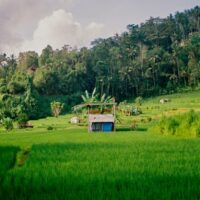
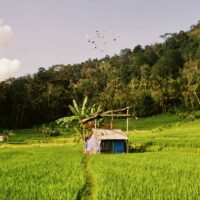
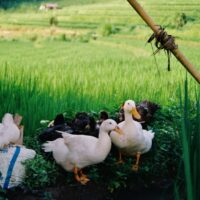


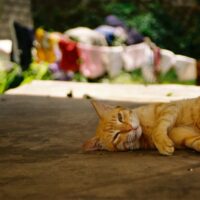
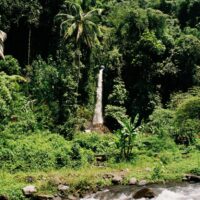

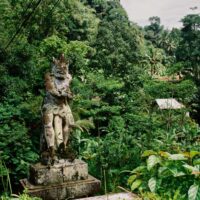
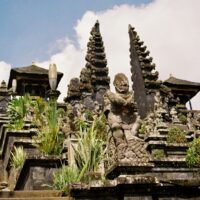

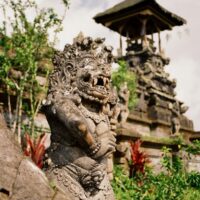
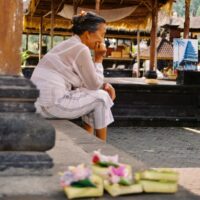

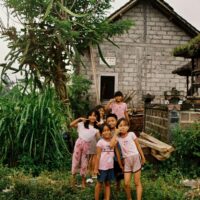
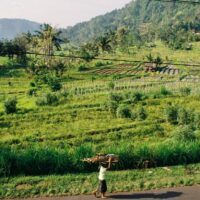
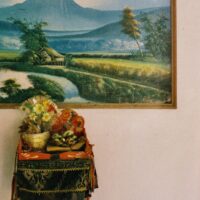
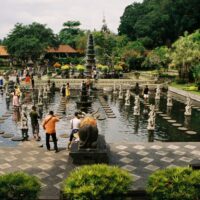

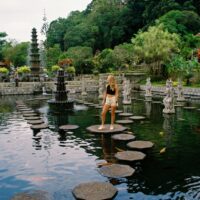

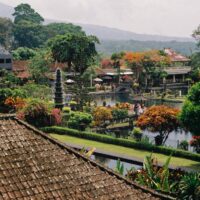




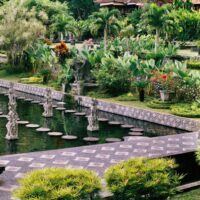
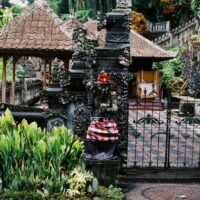
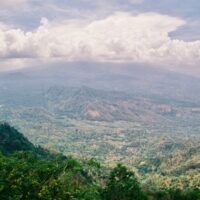
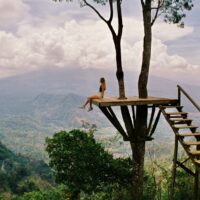
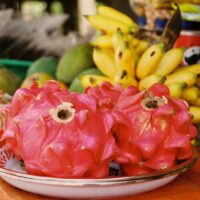

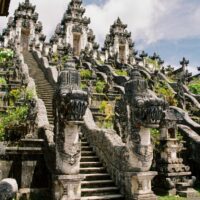
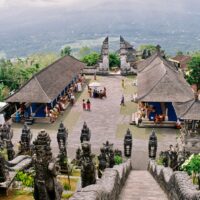
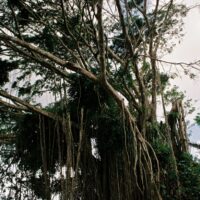
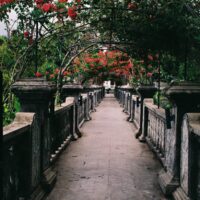
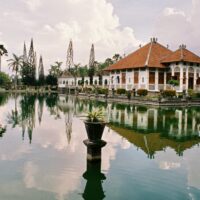

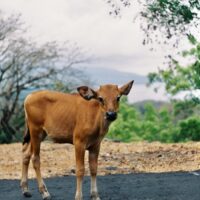

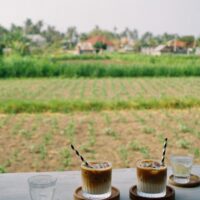

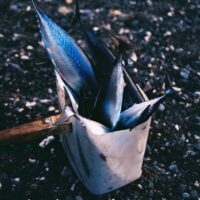


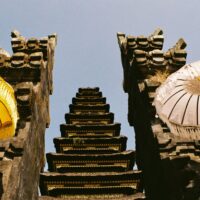


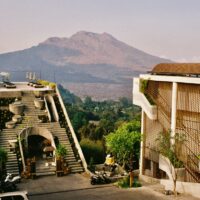
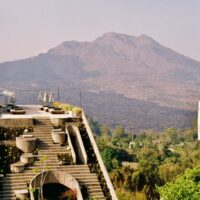



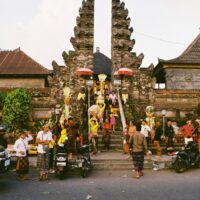
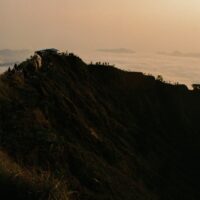


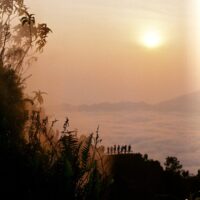


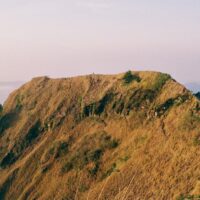
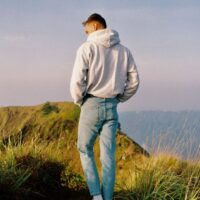

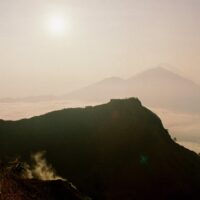

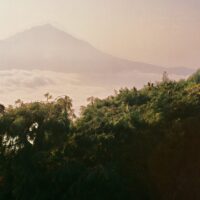
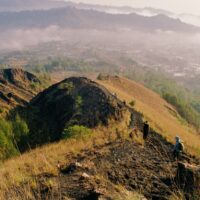
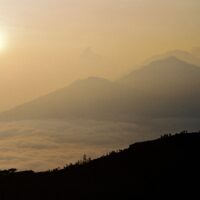
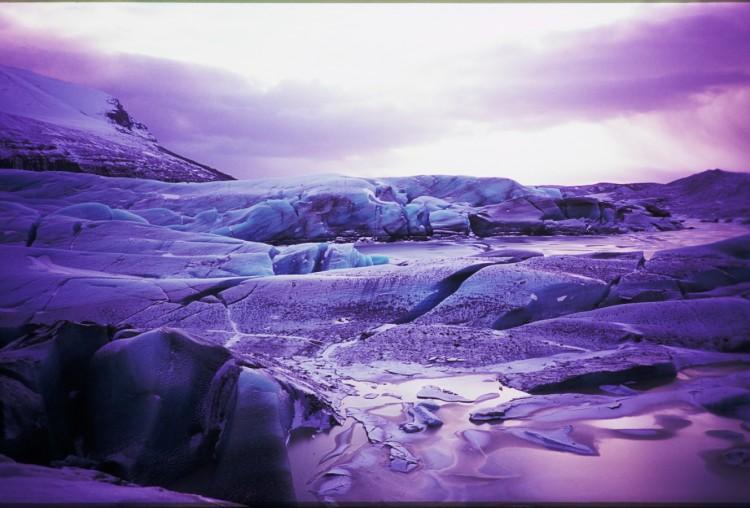
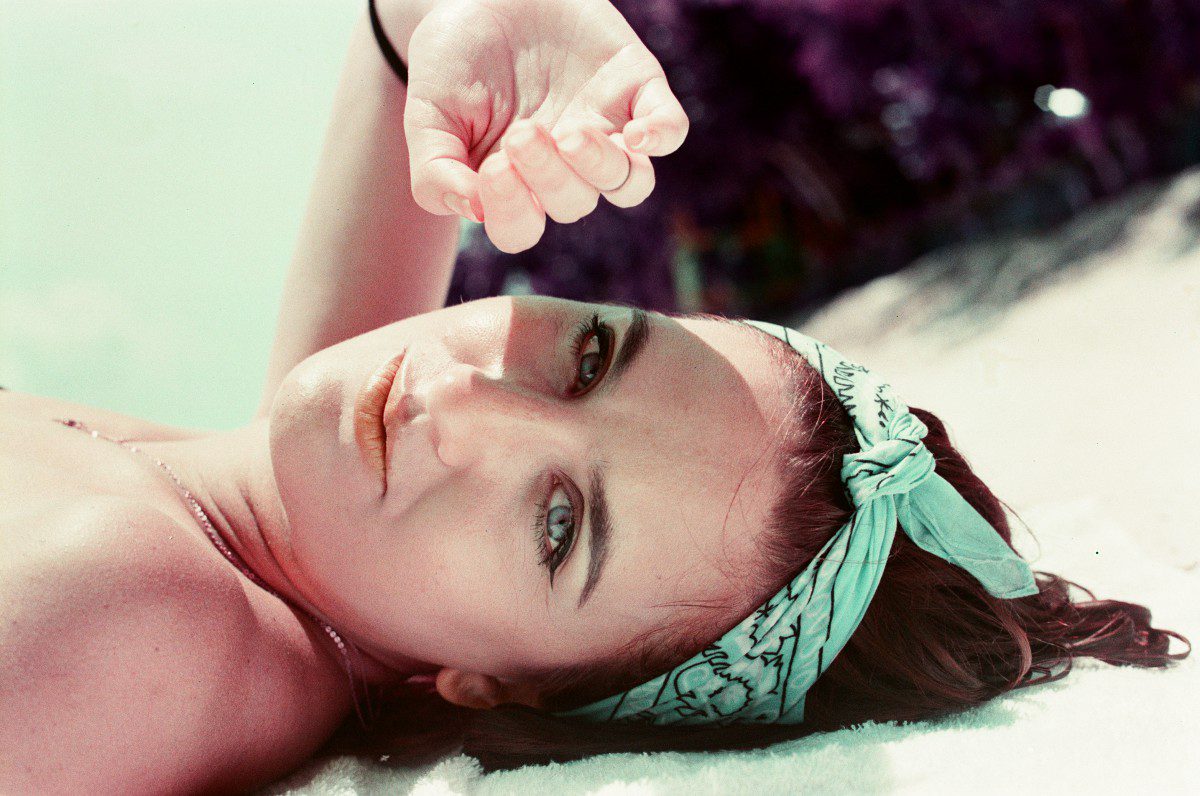

Comments
I absolutely adored reading this Andrea, I felt like I was right there with you, sharing that wonderful scenery with your stunning photos. I’m blown away by how beautifully you write. Is there no end to your talents?
I’m so hoping this may come together as a book sometime! Thank you for all that you do and share xx